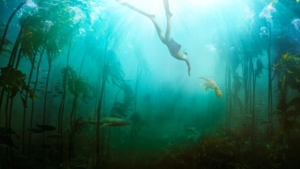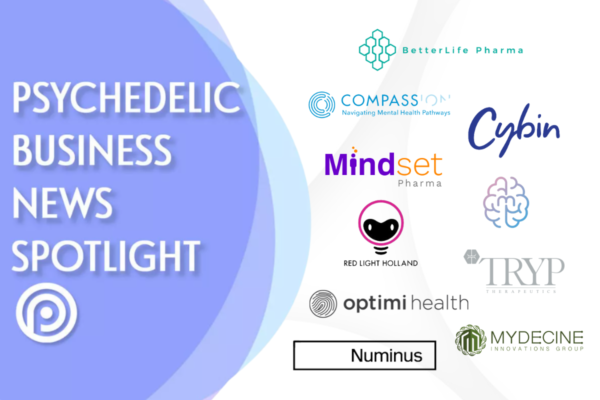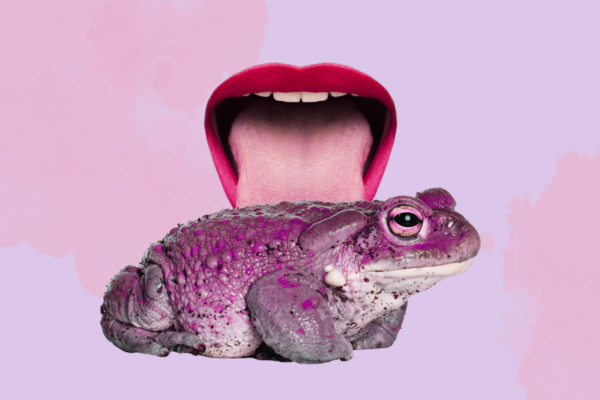
Recently, news broke that Field Trip Health (NASDAQ: FTRP, TSX: FTRP) dosed the first patient in its Phase 1 safety trial for their next-generation psychedelic, FT-104. For the company, this is exciting news, as FT-104 is one of the first next-generation psychedelics to make its way into clinical trials.
Based on a somewhat obscure psychedelic, 4-HO-DiPT, FT-104 is apparently similar to psilocybin, though with a shorter duration, lasting only around 2-3 hours.
To get a better understanding of FT-104, Field Trip’s drug development strategy, and the clinical trial they just commenced, I reached out to the Chief Scientific Officer of the company, Nathan Bryson. Below is a transcript of our interview, conducted through email.
Note: Field Trip Health is in the process of dividing into two separate companies. Field Trip Health and Wellness will inherit the company’s ketamine-assisted therapy and wellness clinics, while Reunion Neurosciences Inc will inherit the company’s drug development efforts. All information discussed in this interview will be in the domain of Reunion Neurosciences. The division is expected to be completed on August 17th, at which point the company will trade on the NASDAQ Stock Market and Toronto Stock Exchange under the ticker symbol “REUN”. Once this happens, FT-104 will become known as RE-104. In the interview, Bryson refers to the drug by both names.
FT-104 is a prodrug of 4-HO-DiPT, which was apparently one of psychedelic pioneer Alexander Shulgin’s favorite tryptamines. Why did Field Trip decide upon this little-known compound to use as the scaffolding of their first novel psychedelic? What advantages do you see over other classical psychedelics, such as psilocybin? And finally, what is novel about FT-104?
At the start, we believed that a short duration experience, on the order of 2 to 3 hours, could be more acceptable to a patient, particularly for patients naïve to psychoactive drug substances. Such a substance would also be more convenient for patients, as well as psychiatrists and trained psychotherapists who will be present to monitor and protect, or guide, the patient as the psychoactive experience, sometimes referred to as a “trip” or a “journey,” takes place. But as a company we also sought that any development be protectable with patents so that the company could have commercial sales and marketing exclusivity so that it would be possible to recover the very high costs of development and allow for a return to our investors. And lastly, we also hoped that it would be possible to achieve the two goals above, a shorter duration and intellectual property, by following a path that was built on a known psychedelic molecule to reduce the overall risk of the project. Despite all the work that has been done to date by a lot of very knowledgeable researchers, there are still many questions relating to how the pharmacology of psychedelics affect the psychedelic experience and the subsequent outcomes. 4-HO-DiPT offered a starting point for all these objectives, and it was right there in Shulgin’s TiHKAL [a book written by Alexander and Ann Shulgin], as a favorite “shortie”: 2 to 3 hour trip time, a handle for a prodrug concept (ie 4-HO) and all we needed was the right prodrug concept that was patentable.
The novelty, an aspect of patentability, was achieved in combination with utility and inventiveness when we put a glutaric acid on the 4-HO and watched as it cleaved off immediately and quantitatively in the presence of rodent or human plasma or after administration to a rodent or a primate and realized this is a better way to provide 4-HO-DiPT than the molecule itself. Glutaric acid is an endogenous substance, i.e., it’s found in the body, so it shouldn’t create any toxicity issues on its own. It can easily be added chemically to 4-HO-DiPT by reacting with glutaric anhydride, a very simple, cheap starting material in one step in very high yield – avoiding a much more complicated path than with putting phosphate on psilocin to make psilocybin. And from a patent perspective, even though esters were known for 4-HO-DiPT, carboxy-terminal esters provide advantages including improved solubility of the drug product, which we have since seen lead to improved bioavailability and excellent reproducibility of absorption and elimination. Overall, RE-104 is a really simple, straightforward and elegant solution to the goals we set out looking for. And the speed with which we have progressed through development of novel chemistry, safety demonstrations in preclinical studies and early Phase 1 development, as well as a granted US patent in less than 8 months after filing the formal utility application, attests to the validity of our selection.
Though you are still in Phase 1 safety trials, what conditions do you hope that FT-104 will eventually be able to help heal? Why focus on these?
We spent a lot of time on this aspect of the development and benefited from much of the work done by our predecessors in this area going back many years. In selecting indications where RE-104 would be useful and advantageous, as well as meet certain corporate goals, such as speed to market and potential returns, we consulted with business development teams in the US and Canada. We assessed potential indications from the perspective of scientific evidence, reasonable translations, competitive nature of the businesses, patient needs, pricing and reimbursement potential, and several other factors, leading us to consider postpartum depression (PPD) and treatment-resistant depression (TRD) as the lead indications. Our initial proof-of-concept will be in PPD, where it is possible to obtain strong evidence of efficacy with a small patient number and in less time. Furthermore, if indeed the fast elimination observed in animal studies and reported in anecdotes such as those of Shulgin are true, then the washout of the drug is very fast and it is possible to not only return mothers back to their children within 4-8 hours, but also possible to return mothers to nursing within 12 hours – and wouldn’t that be amazing. We are bolstered in our belief this might be possible also from the observed metabolic profile of the drug which shows few metabolites, and all could be expected to be inactive or washout fairly rapidly. Finally, it is our belief and that of our clinical advisory team, that a positive response in PPD would read onto and be predictive of TRD, and so by doing PPD first we are achieving our goals in the most expeditious manner possible.
Walk me through the current Phase 1 clinical trial. How many participants will there be, and other than safety and tolerability, what data are you most excited to analyze?
The study is a single escalating dose design with 5 cohorts of 8 healthy volunteers. The first 8 eligible subjects in the trial will receive a single low dose of the drug or placebo (6 placebo and 2 active per cohort) after completing preparation sessions to inform them about the drug and the experience they may undergo. Subjects are dosed individually, much as a patient might be dosed in a psychedelic drug session, and the session is overseen by personnel trained by Field Trip staff who are highly experienced in how to guide such sessions. We are taking extra care with subjects because we know less about this drug than we do psilocybin. After the drug session is over, the patient is held overnight and released the following morning, with a follow-up visit at Day 7. If the drug is deemed safe and tolerable by an external safety review committee, then we are given the green light to progress to the next highest dose level predefined in the study. There are 5 dosing levels defined in the protocol, up to and slightly above the level suggested by Shulgin.
What really excites us is the possibility to demonstrate a safe range of doses that we can take into Phase 2 that demonstrate a short, but intense, psychedelic experience, as was suggested by a Shulgin entry in TiHKAL. Moreover, the pharmacokinetic data showing strong reproducibility and good bioavailability will be valuable in helping to maintain consistency between patients and demonstrate control of peak experience, which should facilitate agreement on dose selection and clinical development with the competent regulatory authorities, like the FDA.
And don’t underestimate the importance of a patent in-hand for a novel chemical entity, as we hope this makes us an attractive target for partnering and/or investment at this stage.
Do you view FT-104 as a finished product that now must solely be validated in clinical trials, or could Field Trip / Reunion make modifications to the molecule to fine-tune it based on what is learned in clinical trials?
There are modifications that would still fall within the scope of the patent, but we think we have chosen the best option to begin with, but as always in clinical development it is best to have back-up plans running in the background, just in case. And we do.
Do you believe that FT-104 will be a superior medicine when it comes to treating various forms of depression, and thus will lead to a “winner takes all/most” scenario, or will there be space for traditional psilocybin and other classical psychedelics —as well as other next-generation psychedelics— to treat depression under certain circumstances?
There is still so much to learn. With RE-104 we are starting from a known substance with some anecdotal reporting and relying on that as somewhat of a de-risking strategy. MDMA and psilocybin are two very good products that could benefit millions of patients. We also truly believe in the potential for RE-104 to meet the goals stated before. As for whether it is the ultimate drug product, we will have to wait and see. We do feel it has its unique properties and positioning and that will help us develop it to its full potential.
But there is surely so much more chemistry and biochemistry to explore. Recently, we found a family of serotonin-2A agonists that are also antagonists at serotonin-2B. We were extremely surprised and patented these molecules and are now considering them as pipeline candidates in our RE-200 Family. The structures are unique, and we are starting to know more about their broader pharmacological profiles and their ability to produce a reaction in rodents that models the psychedelic hallucinations that occur in humans. The development of these novel structures will take time and a lot of effort to better understand these very complex molecules and their receptor systems, as well as the neural networks and downstream effects they initiate.
Thank you for taking the time to answer these questions. I look forward to watching the progress that Field Trip/ Reunion makes on FT-104 in the coming years.





